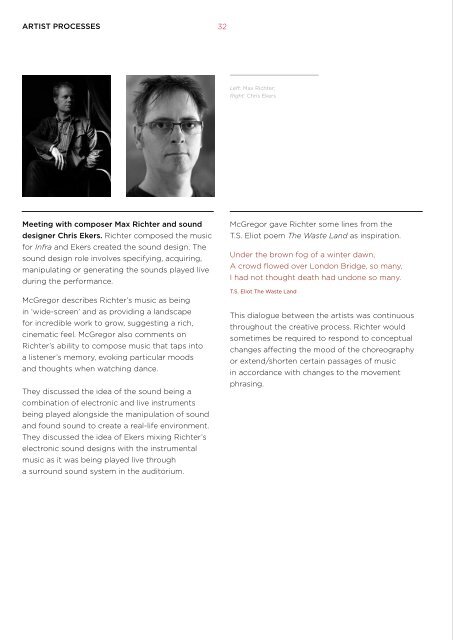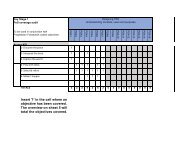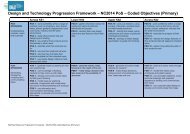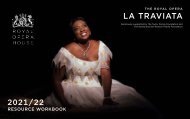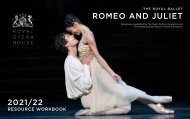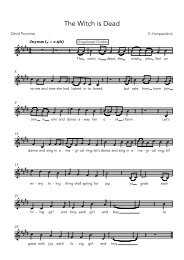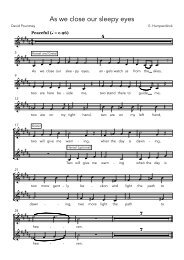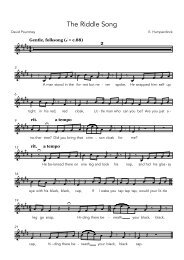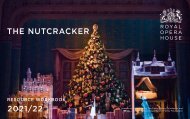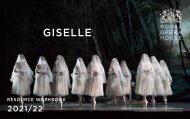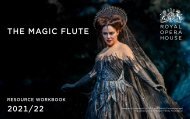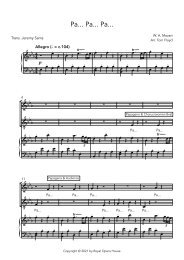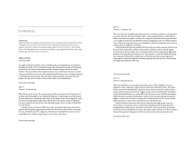Infra E-resource pack 2018
Create successful ePaper yourself
Turn your PDF publications into a flip-book with our unique Google optimized e-Paper software.
ARTIST PROCESSES<br />
32<br />
Left: Max Richter;<br />
Right: Chris Ekers<br />
Meeting with composer Max Richter and sound<br />
McGregor gave Richter some lines from the<br />
Stage 3<br />
McGregor uses a combination of approaches when<br />
designer Chris Ekers. Richter composed the music<br />
T.S. Eliot poem The Waste Land as inspiration.<br />
Meeting the dancers<br />
working in the studio with the dancers:<br />
for <strong>Infra</strong> and Ekers created the sound design. The<br />
sound design role involves specifying, acquiring,<br />
manipulating or generating the sounds played live<br />
during the performance.<br />
McGregor describes Richter’s music as being<br />
Under the brown fog of a winter dawn,<br />
A crowd flowed over London Bridge, so many,<br />
I had not thought death had undone so many.<br />
T.S. Eliot The Waste Land<br />
Before meeting the dancers McGregor had done<br />
extensive research on the ideas, concepts and<br />
themes for design, music and movement. However,<br />
he arrived to the studio with an empty notebook<br />
in order not to be fixed to specific ideas or<br />
1. SHOW<br />
Arrives at the studio with pre-prepared movement<br />
vocabulary that he teaches directly to the dancers.<br />
(He does not stay in this mode for long.)<br />
in ‘wide-screen’ and as providing a landscape<br />
for incredible work to grow, suggesting a rich,<br />
cinematic feel. McGregor also comments on<br />
Richter’s ability to compose music that taps into<br />
a listener’s memory, evoking particular moods<br />
and thoughts when watching dance.<br />
They discussed the idea of the sound being a<br />
combination of electronic and live instruments<br />
This dialogue between the artists was continuous<br />
throughout the creative process. Richter would<br />
sometimes be required to respond to conceptual<br />
changes affecting the mood of the choreography<br />
or extend/shorten certain passages of music<br />
in accordance with changes to the movement<br />
phrasing.<br />
movements.<br />
For McGregor the first few weeks of rehearsals are<br />
about getting to know the dancers, discovering<br />
something new about them and building a working<br />
relationship. He works hard with each dancer to<br />
find their unique physical signatures and individual<br />
self-expression.<br />
2. MAKE<br />
Works with what is inside the individual dancer,<br />
their particular physical signatures. In this mode<br />
he sees the dancers as architectural drawings<br />
or models to experiment with. He moves the<br />
dancers and offers a number of suggestions and<br />
possibilities so that they are creating a movement<br />
language together.<br />
being played alongside the manipulation of sound<br />
3. TASK<br />
and found sound to create a real-life environment.<br />
Sets an improvisational task based on one aspect<br />
They discussed the idea of Ekers mixing Richter’s<br />
of his research. They then all explore this task<br />
electronic sound designs with the instrumental<br />
individually and then develop ideas together.<br />
music as it was being played live through<br />
a surround sound system in the auditorium.


